Unlocking 80’s Music Production Secrets – Def Leppard’s Pyromania
by Jay Sandwich
One thing that Mike Shipley learned during his early days working on records in the 70’s was achieving something people who worked in recording studios at the time called the “English sound”.
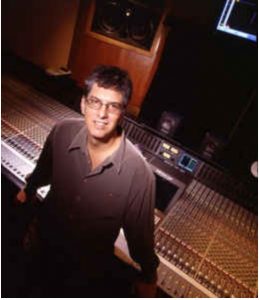
What this meant, according to Shipley, was to be as un-pure as possible when trying to create a record’s sound.
If you were a recording purist, as people seemed to be in places like LA during the 1970’s, this meant doing things by the books, to achieve something natural and pure and authentic.
Meanwhile, in England, at the same exact period in time, music producers were aiming to be as impure as they possibly could be. The point, it seemed, was to do whatever you could in order to achieve the result you wanted. This was a new style of recording, and it broke all the rules.
To be blunt, purists hated it, while others who were willing to experiment gravitated towards this new recording style.
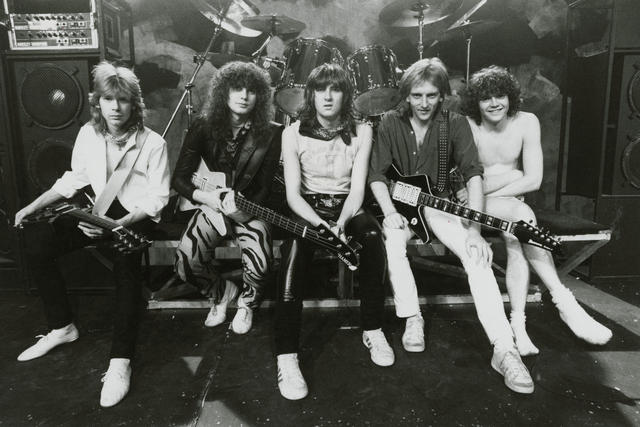
Def Leppard – The Pyromania Sessions
By the time Mike Shipley (sound engineer) teamed up with Mutt Lange (album producer) to work on the Def Leppard Pyromania album, you might be surprised to learn that Star Wars was a major influence on the recording process of that album.
By Star Wars, we mean – yes, the movie Star Wars – as in big, bombastic, 3-D, over the top, fantastic, and awe-inspiring.
This was the feeling in the popular culture by the time Pyromania was being recorded in the early 80’s, and, you’ve got to admit, it shows in the final product.
This record is a monster in terms of sheer sound, and goes far beyond what you think a normal band might be able to achieve in the studio if they just ran through a song live off the floor without any studio wizardry.
With that in mind, let’s take a listen to Def Leppard’s Photograph, from – of course – Pyromania.
This idea of achieving that early 80’s no-holds-barred / go-big-or-go-home sound definitely required a shift in mindset for an aspiring producer just getting into the record biz.
Instead of trying to capture the actual sound of a band playing a song live off the floor and make it sound totally natural and believable, the goal was to take a song, and make the energy of the recording somehow match the spirit of that song – at all costs.
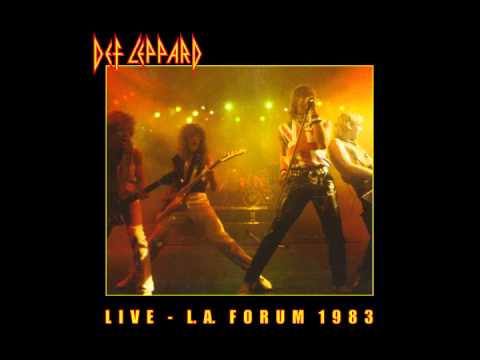
If the song sounded like it was meant to be played in an arena, then somehow these producers – with Pyromania being a prime example of this – were intent on making the song sound absolutely colossal.
At the same time, records like Pyromania were definitely a bid to make anthemic rock part of the mainstream again, as 80’s bands that were popular at the time were veering towards “New Wave”, which meant more synths, keys, robotic vocal stylings, and decidedly less guitars and pulse pounding heavy rock. Unacceptable!
80’s Music Production – A Time To Experiment
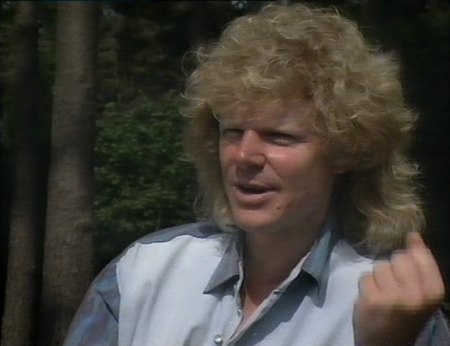
In terms of record producers being either purist or non-purist, it was obvious by the early 80’s that, for some hit-makers, all bets were off. They weren’t hung up on traditional methods, and they were looking for a new sound.
Producers like Mutt Lange were into experimenting with a lot of recording techniques, and he was looked to as a bit of a maverick, having already cranked out one hit after another.
One major thing Mutt liked to screw around with at the time of recording Pyromania was drum sounds, making them even bigger and beefier than on Back In Black from a few years prior.
When it came to drum sounds on Pyromania, Mutt and Mike Shipley were not afraid to stack one recorded sound on top of another to get the feeling they wanted.
Using a cheap 8-bit Fairlight sampler, fans are often surprised to learn that these rather cheesy samples were carefully integrated into the sound of the drums on Pyromania, in order to get that radically huge drum sound.
This involved slowing down the tape, and fusing together actual takes with pre-recorded samples of kick drum and snare drum sounds.
This Might Take A While
You may have heard that back in 60’s and 70’s recording studios, there were times where hours if not days if not MONTHS were spent by sound engineers spicing tape together, just hoping that the masters weren’t going to wear down and disintegrate in their hands.
Some tapes were abused so much, its a miracle that some of these classic albums were ever finished.
This applies to Pyromania just as much as an album like Fleetwood Mac’s Rumors that came half a decade earlier, and it was a test of a sound engineer’s patience when recording an album like this.
Meanwhile, the band had to spend their time twiddling their thumbs while the production was going on, occasionally being called in to do something.
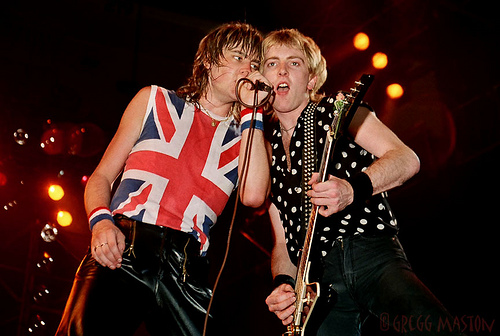
Shipley has mentioned that one thing that he personally needed in order to see Pyromania through was something that not everyone has, and that’s a lot of good old fashioned patience.
One reason patience was necessary, especially in this case, is because not only were there many, many overdubs to do, but Mutt would often decide that an integral part of a song would need to be completely scrapped and re-worked, meaning that there was a lot of hard work that simply went down the drain and there was nothing anyone could do or say.
As a sound engineer in this situation, there are two ways you can react. You can quit, or you can simply continue working and never complain.
Mike Shipley had learned that in order to make it in this business, he would need to persevere any and all trials that confronted him along the way.
If that meant spending weeks working on a part for a song, only to hear from Mutt that that part was no longer going to be used, that was just the way it was.
He had to roll with the punches right through to the end, and he did, but it wasn’t always easy. After all, these were 18-hour days we’re talking about, 7 days a week.
At the same time, if Mutt heard something in his head, it was up to Mike to say “Ok, I’ll figure it out”, even if whatever that thing was seemed impossible to achieve at first.
This was another big way in which an attitude adjustment was needed by anyone who was working on Pyromania.
Besides the band themselves, Mutt was the driving creative force behind the record and he was a taskmaster.
SSL Mixing Console
A major contributing factor to any recording is going to be the mixing console, and for Pyromania, that console was SSL (Solid State Logic).
At the time when the sessions were getting underway, Mike Shipley gunned hard for SSL to be the console of choice, while other members of the team were trying for something more cost effective.
In the end, it was SSL that was used, and this console is worked its magic on the production of Pyromania, coming in handy particularly for the many vocal parts that needed to be balanced just so.
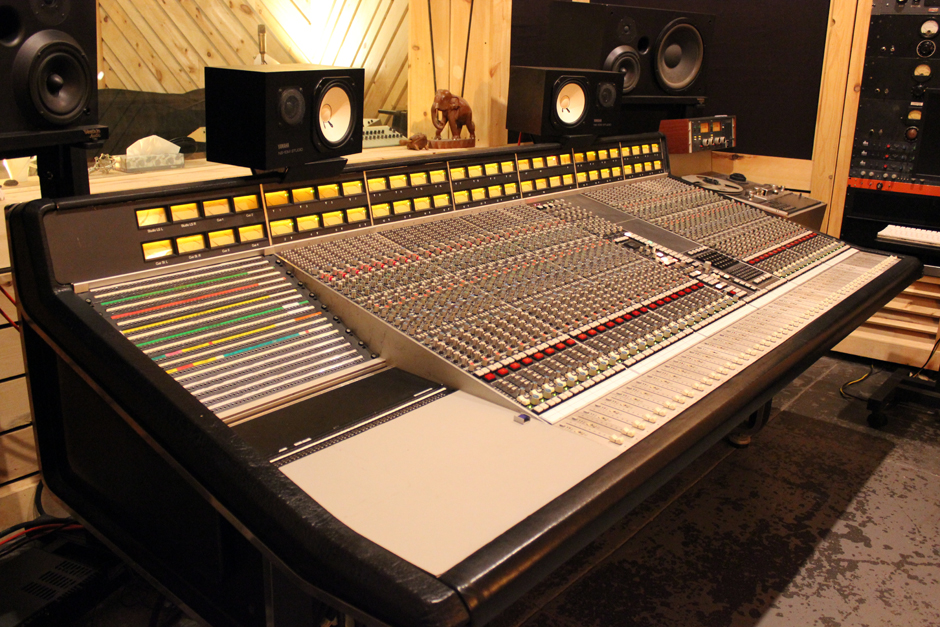
Not only did the SSL provide superior performance in a multitude of ways, but one major benefit was the fact that Mike was able to manually EQ almost every syllable to provide maximum effect, a technique which is more commonly used with today’s software but at the time would have seemed like borderline insanity to sit there and perform.
However, as many have said about Mutt Lange, the man loves to dig into the nitty gritty, and this is why he has no qualms about analyzing every beat, every breath, every note – everything.
Band members sometimes had nervous breakdowns in the studio, trying to please Mutt. But Mutt wasn’t without his own sense of humor – he did like to joke around sometimes, throwing out the famous line of complete nonsense “Gunter, glieben, glauchen, globen” which kicks off Rock Of Ages just to lighten the mood.
Err…anyway, the SSL console used on Pyromania allowed Mutt to produce the living shit out of that album, and, although it nearly drove the band off the deep end, the results speak for themselves.
Gruelling studio hours aside, Shipley has stated that his favorite was always the 9000 series.
Marshall Amps
Mike Shipley has mentioned over on GearSlutz that every Marshall known to man was used to get the famous Pyromania guitar sound that many sound engineers these days are still trying to sort out.
Shipley said that 100 or more amps were tried, but the eventual “winner” was a custom 100 watt head with an old cabinet.
Knowing what has been said about Mutt’s rigorous work ethic, he probably did what he likes to do, which is stockpile takes, and use a bit of everything to get his signature blend in the end.
Vocal Layering
Mutt Lange is famous for producing hit albums, and one feature of many of these albums is vocal layering. While many would consider the amount of vocal overdubs he needed to be too many, Mutt loved to get dozens of takes and layer them at will.
To Mutt, a take of a vocal seems more like a single brushstroke on a painting. He’s most likely going to blend them together to achieve the masterpiece he wants.
With Def Leppard, and specifically Joe Elliott, he treated the man like a tube of paint, just squeezing more and more out of him and laying the vocals on really thick.
When one color ran out, Mutt would turn to – that’s right, Joe again! – and do the same thing.
This is a technique Mutt is famous for, and if you are the singer on a Mutt Lange record, whether you are Joe Elliott, Brian Johnson, or Shania Twain, you’d better be ready to sing, sing, sing until you can’t sing no more!
Teletronix LA-2
With vocals on Pyromania being such a huge focus, the right type of vocal compression was required, and, for Mike Shipley, this meant the LA-2.
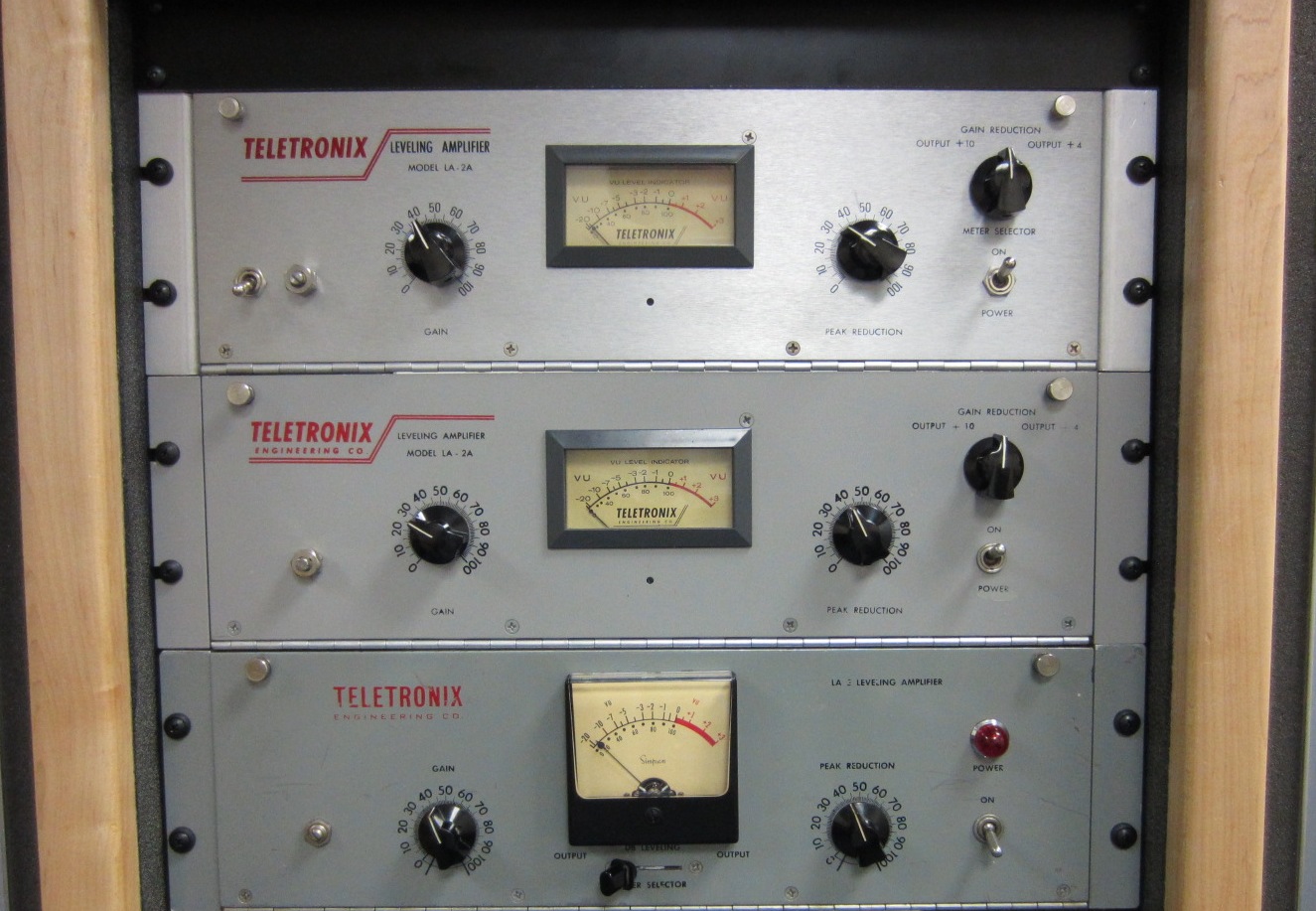
It is with this classic unit that Mutt used to produce Joe’s many vocal layers, and find the spectacular balance that Pyromania exhibits.
Shipley has said that it is this unit that allowed them to blend the vocals together, bringing out a certain breathy quality that brought Joe’s vocals, both leads and back-ups, to achieve the soaring qualities that they had.
Those vocal tracks still manage to impress new fans every single day, and old fans keep going back for more.
When it comes to the exact method Mutt used on Pyromania to get the vocal effects he did, information is notoriously scarce. Clearly, he’s got some smooth moves when it comes to how where to “place” the vocals and what effects should be applied and when.
In Rock Of Ages, for instance, the main vocal isn’t heavily affected, but the backups are clearly multi-layered. Once the back-ups are introduced into the song, the song suddenly gets bigger.
And then, when the chorus hits, the lead vocal blends in with the back-ups to create an epic vocal presence that has been rarely, if ever, done the exact same way.
Reverb And Reverse Delay
In other instances, Mutt employs the elusive reverse-delay on the drums and vocals that introduce Photograph, and, by now, you’re so used to it you don’t even think about it. But, when you do think about it, you realize that it is as far from “natural” as can be.
In music forums across the internet, musicians still debate what exactly is in Mutt’s secret sauce when it comes to making things sound “huge”, and it still remains a mystery!
In one forum post, Shipley did state the what would seem fairly obvious, and that is that “We had tons of delays and flangers etc for the mix”.
Depth Of Field
Along with all of the layering, and radical mixing that went on with Pyromania, Mutt’s real specialty was creating a wide depth of field.
This meant, basically, creating space so that all of those layers could co-exist in perfect harmony. This concept is something that all audiophiles are aware of to some extent, but one which Mutt Lange is certainly a master of.
The opening track, Rock Rock Till You Drop, sets the stage for the sonic world you are about to enter.
Conclusion
With Pyromania, although it was reportedly torture to painstakingly record in the fashion that Mutt liked, it was Mutt that always kept his eye on the prize, knowing what he wanted and sculpting the sound bit by bit.
By the time a track on Pyromania was finished, it lived in its own little world of sound, and created a unique mood that engaged the listener and caused them to listen, if subconsciously, to the orchestra of parts he had pieced together.
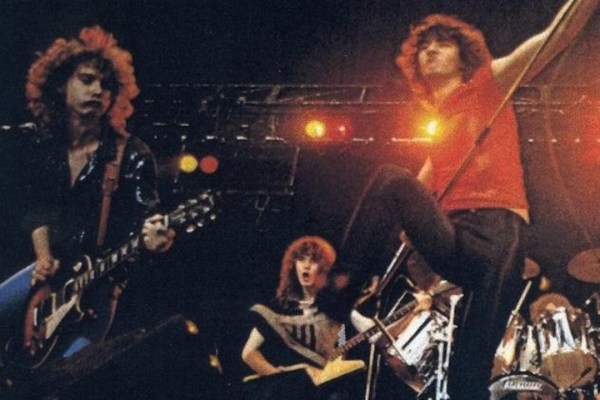
Even the band themselves were not so intrigued with this idea of laying things down brick by brick, wanting only to play their respective musical parts and play to the standard that Mutt himself demanded, which was no easy task and made for volatile times during those sessions.
It’s only natural that a band like Def Leppard would want to rock out full tilt back in ’83 because, hey, they were in the prime of their lives then. But no dice! They were at Mutt’s mercy, even if it almost drove them to tears.
Of course, who do you think was the producer on Hysteria? Results like these speak for themselves…
More Stuff You Might Be Interested In
More about Mike Shipley via Def Leppard UK
Hear Robert John Mutt Lange on Spotify
Read our article, Mixing For Loudness
Read our article, How To Make A Backing Track At Home From Scratch
 |
 |
 |
 |

About Jay Sandwich
Jay is an ex-shred guitar player and current modular synth noodler from a small town somewhere. Quote: “I’m a salty old sandwich with a perspective as fresh as bread.” No bull.
Leave a Reply
Check for FREE Gifts. Or latest free acoustic guitars from our shop.
Remove Ad block to reveal all the rewards. Once done, hit a button below
 |
 |
 |
 |